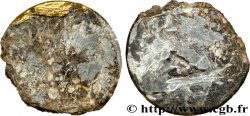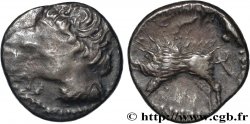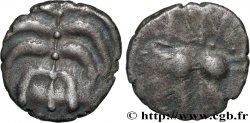v23_0889 - HELVETII (Currently Switzerland) Statère de Philippe II, imitation celtique, type de Soy, classe I
MONNAIES 23 (2004)
Starting price : 2 200.00 €
Estimate : 4 500.00 €
Realised price : 2 400.00 €
Number of bids : 2
Maximum bid : 3 370.00 €
Starting price : 2 200.00 €
Estimate : 4 500.00 €
Realised price : 2 400.00 €
Number of bids : 2
Maximum bid : 3 370.00 €
Type : Statère de Philippe II, imitation celtique, type de Soy, classe I
Date: IIIe-IIe siècles avant J.-C.
Metal : gold
Diameter : 18,5 mm
Orientation dies : 10 h.
Weight : 8,38 g.
Rarity : R2
Coments on the condition:
Exemplaire sur un flan large. Beau portrait. Faiblesse de frappe au revers. Infimes petites marques sur le visage ?
Catalogue references :
Predigree :
Cet exemplaire provient de MONNAIES XV, 30 septembre 2002, n° 1369
Obverse
Obverse legend : ANÉPIGRAPHE.
Obverse description : Tête laurée à droite, imitant la tête d’Apollon.
Reverse
Reverse description : Bige galopant à droite, les chevaux bondissant, avec un canthare sous les pattes avant ; l'aurige au-dessus de la roue du char, tient un fouet ; ligne d'exergue et la légende au-dessous.
Reverse legend : fILIPP.U
Commentary
Flan légèrement concave au revers et bombé au droit. Exemplaire portant un coup superficiel de pioche ou de piolet au revers, au-dessus du cheval sur le kentron de l’aurige. L’exemplaire est encore lourd (8,39 g) pour un poids théorique de 8,60 g et le style relativement grec bien que nous puissions déceler un début de stylisation dans le traitement de la tête d’Apollon et au revers dans la représentation du bige.







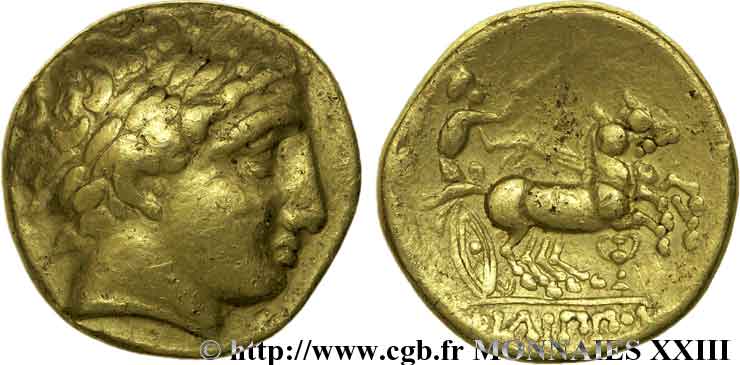
 Report a mistake
Report a mistake Print the page
Print the page Share my selection
Share my selection Ask a question
Ask a question Consign / sell
Consign / sell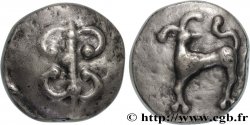
 Full data
Full data